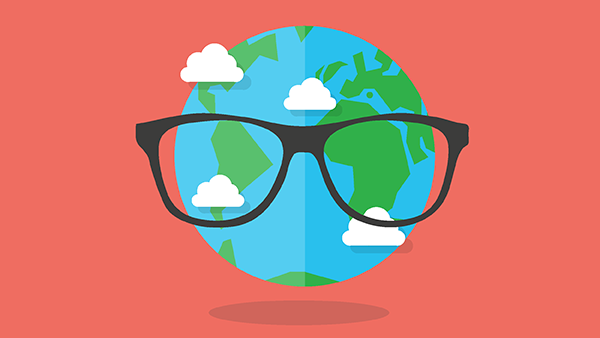You are viewing 1 of your 3 articles before login/registration is required
Eyeglass Access
How VisionSpring is breaking down barriers to basic eye care in the developing world
Globally, an estimated 2.5 billion people do not have access to the glasses required to improve their vision – 80 percent of whom are in developing countries. For the past two decades, New York-based not-for-profit VisionSpring has been working to rebalance the scales. Here, we sit down with CEO Ella Gudwin to discuss perpetual challenges, potential solutions, and her hope for the future.
What are the obstacles to accessing glasses in the developing world?
We look at this as a public health issue – which it is – but also as a product-adoption market failure problem. The world needs 400,000 new sale and distribution points for reading glasses to tackle presbyopia; for myopia, we need around 500,000 new points of sale and distribution for prescription glasses. So we have to look at human resources; currently, there aren’t enough optometrists in the world to go around. We look at trade and production issues; glasses can be incredibly cheap to produce, but they don’t get to the last mile – why is that? It’s down to trade barriers, high importation costs, and inconsistencies in the way eyeglasses are defined. People don’t understand the difference between reading glasses and prescription glasses. This all creates confusion in the market about how to price them.
The reality is that eyeglasses have been locked up inside hospitals and clinics. But lots of people who require glasses aren’t sick; they don’t need their eyes urgently checked. Plus, there’s still a stigma associated with wearing glasses. One of our studies found that 30 percent of people still believe that wearing glasses makes your eyes weaker. And some people believe that eyeglasses are like braces – you wear them for a while, then your eyes will be fixed.
How can the stigma of wearing glasses be addressed?
It varies from country to country. For example, women in rural Bangladesh are not judgmental of other people wearing glasses, but they’re very self-conscious about wearing glasses themselves. They don’t just want to wear glasses that have been given to them, they want to have the dignity of choice – they want small glasses to complement their sarees and their jewelry. We have to provide glasses and styles that people want to wear, that fit properly, and are comfortable.
There’s a stigma associated with girls in particular. Some conservative communities still believe that girls who wear glasses need to have a higher dowry. Workers can also be discriminated against for wearing glasses. Some people are concerned that wearing glasses might cost them their jobs. Sometimes this is more a fear than an actual experience, but we have seen people who have been fired for wearing glasses – for example, truck drivers and garment workers. We’ve seen it in employment environments where there is little understanding within HR departments. And we’ve had stories of people wearing glasses getting paid less when they’re recruited. Only after they can prove they can meet their targets are their paychecks readjusted.
Can you talk about VisionSpring’s “revolutionary methodology” of training health workers to identify vision problems and dispense reading glasses?
First of all, we’re thrilled to say that it’s no longer revolutionary! The World Health Organization (WHO) has introduced training – based on our research, along with that of other organizations – for community health workers and nurses so they can carry out basic screening for blurry distance vision, presbyopia, and assist people in obtaining reading glasses. In addition, they can now refer people for higher level conditions – those who need prescription glasses, cataract surgery, or other kinds of care.
Back in 2001, seeing that people in Europe, in the US, and in Australia could buy over-the-counter (OTC) reading glasses in bookshops, train stations, and even gas stations, we asked why, in the lowest-income parts of the world, was a basic OTC magnifying glass still not readily available to the general population? We developed a task-shifting approach that would allow community health workers, pharmacists, and nurses to screen for presbyopia so that optometrists and ophthalmologists were free to address higher-level conditions. Task-shifting is a critical part of addressing the problem. We now have more than 25,000 community health workers screening for presbyopia in Bangladesh, Uganda, and Zambia. They’ve already screened 10 million people, and issued 2 million pairs of reading glasses. This work is also being done by other organizations in Pakistan, Rwanda, and Liberia, to name just a few countries.
The WHO states that women are less likely to receive eye care services than men in many developing countries…
One of the things we are especially concerned with is the huge emergence of myopia among girls between the ages of eight and 14. What else is happening in their lives at that time? Children are making the transition from primary school to secondary school, and girls are entering their pubescence and their menstruation cycle. So, girls are at risk of not making that transition to secondary school (and thus, in some cultures, at risk of child marriage), if they have blurry vision and are unable to see the blackboard. This needs attention. Another thing to note about gender is that the disparity of vision correction gets worse with age, and with the social and economic status of the woman. The older and poorer a woman is, the less likely she is to have the glasses necessary to correct her vision.
What would you like VisionSpring to have achieved in five years’ time?
I would love to look back on some of these key areas and say that we have solved the problem. I’d like to see the garment sector workers, the tea, coffee, and cocoa workers, the smallholder farmers, the artisans, and the micro-entrepreneurs of the world all have the eyeglasses they need. These are near vision-intensive and very task-oriented occupations – we tend to think that vision correction is only needed for people working on computers or those who are literate. If we have screened and corrected the vision of, let’s say, 12–20 million of these workers, we will have gone a long way to creating that tipping point where everyone who needs glasses has access to them. To get 8 million people’s vision corrected would cost us $70 million, for example, but it would unlock $1–2 billion dollars’ worth of income-earning potential at the household level. And it is completely feasible.
Are you optimistic about the prioritization of eye care as a global health issue?
There have been three very important wins in the last two years. First, in 2021, the United Nations General Assembly voted on the resolution for eye health, recognizing it as a driver of the UN’s Sustainable Development goals. This is the first time we’ve had a global consensus on comprehensive eye health as a human development issue. Second, the WHO issued two key goals that the governments of the world should be working towards by 2030: i) to increase cataract coverage by 30 percent, and ii) to increase refractive error coverage, including presbyopia, by 40 percent. Third, the WHO’s consensus view that eyeglasses and vision screening should be introduced at the primary care level, with nurses and community health workers playing an important role in expanding access to care and getting more people to see optometrists.
So, there have been some really important landscape shifts, and we are excited about what is happening globally; governments around the world now have a mandate to look at comprehensive eye health. It’s a real change, not just small projects here and there. It is a systems-level approach trying to correct the problem for a billion people. And we are thrilled to be among a band of fellow organizations working on this issue. The future’s looking brighter than it ever has!
Reference
- M J Burton et al., “The Lancet Global Health Commission on Global Eye Health: Vision Beyond 2020,” 9, 489 (2021). PMID: 33607016.
The New Optometrist Newsletter
Permission Statement
By opting-in, you agree to receive email communications from The New Optometrist. You will stay up-to-date with optometry content, news, events and sponsors information.
You can view our privacy policy here
Most Popular
Sign up to The New Optometrist Updates
Permission Statement
By opting-in, you agree to receive email communications from The New Optometrist. You will stay up-to-date with optometry content, news, events and sponsors information.
You can view our privacy policy here
Sign up to The New Optometrist Updates
Permission Statement
By opting-in, you agree to receive email communications from The New Optometrist. You will stay up-to-date with optometry content, news, events and sponsors information.
You can view our privacy policy here







